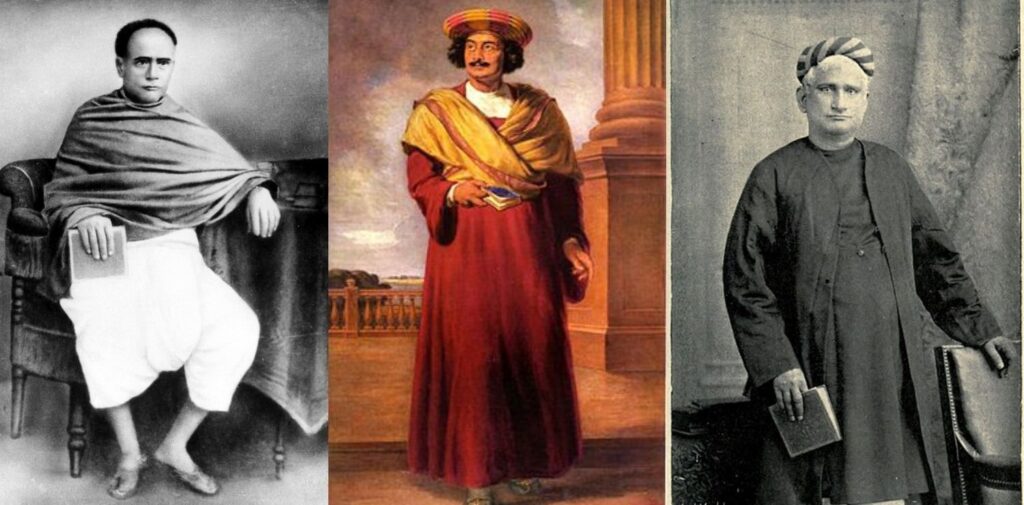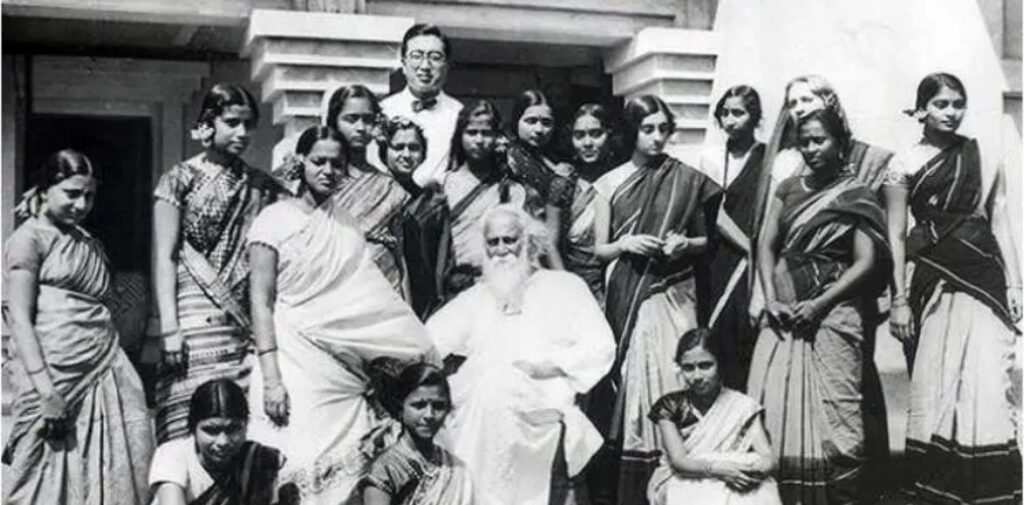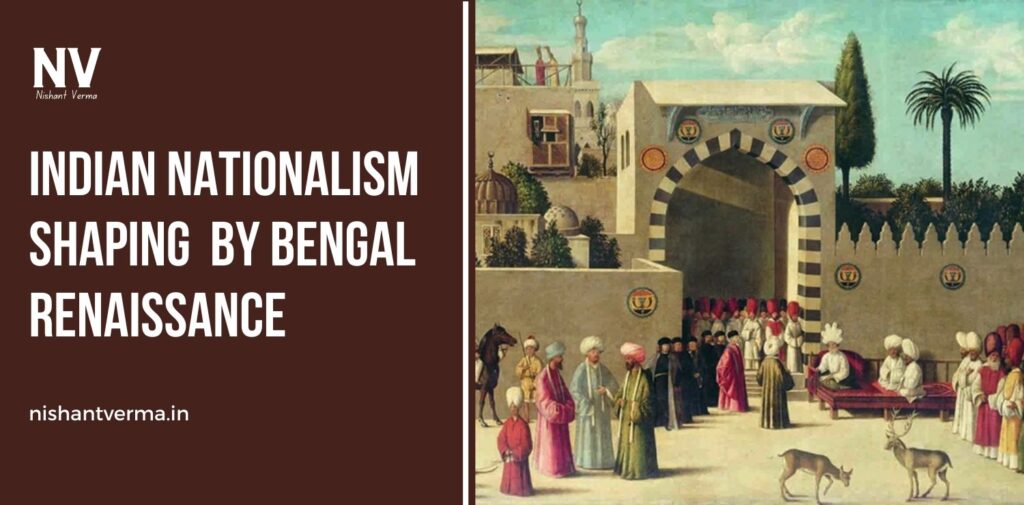The Bengal Renaissance was a transformative cultural, social, and intellectual movement in the 19th and early 20th centuries that laid the foundation for the rise of Indian nationalism. This movement, which began in Bengal, was not just about artistic and literary achievements but also about questioning and challenging the existing social norms, including colonial rule. It was a period of significant change, bringing together ideas of modernization, reform, and national identity. Many of the ideas born during this time played a key role in the eventual struggle for India’s independence.
1. What Was the Bengal Renaissance?
The Bengal Renaissance refers to a period of intellectual and cultural awakening in Bengal, beginning around the early 19th century. It was a time when a group of thinkers, writers, and reformers sought to modernize Indian society by challenging traditional customs and promoting new ideas in science, literature, and education. This movement was also a reaction to the influence of British colonial rule and the need to revive and preserve India’s own rich cultural heritage.
Bengal, particularly Kolkata (formerly Calcutta), became the epicenter of this intellectual movement. The Bengal Renaissance marked a shift from an ancient, traditional society to a more modern and progressive one, blending Western ideas with indigenous values. The contributions of key individuals during this period helped reshape Indian thought, and many of their ideas about social justice, education, and self-governance directly influenced the rise of Indian nationalism.

2. Key Figures in the Bengal Renaissance
Several prominent figures in the Bengal Renaissance played an essential role in shaping the intellectual landscape of India, which, in turn, contributed to the development of Indian nationalism. These reformers and thinkers helped raise awareness about the need for national unity and the importance of cultural revival.
Raja Ram Mohan Roy
Raja Ram Mohan Roy, often referred to as the “Father of the Bengal Renaissance,” was one of the most influential figures of this period. He was deeply concerned with social reform and believed in the need to modernize Indian society without losing touch with its cultural roots. Roy was a vocal critic of the social evils prevalent in Indian society, such as the caste system and the practice of Sati (the ritual of a widow self-immolating on her husband’s funeral pyre). He worked relentlessly to abolish these practices, and his efforts led to the legal ban on Sati in 1829.
Roy was also instrumental in the promotion of education and believed in the importance of both Western and Indian knowledge. He established the Brahmo Samaj, a reformist religious and social organization, which aimed at bringing about religious and social reforms, and it played an important role in the development of modern Indian thought. His ideas and activism planted the seeds for the intellectual awakening that would later fuel the independence movement.
Ishwar Chandra Vidyasagar
Another key figure of the Bengal Renaissance was Ishwar Chandra Vidyasagar, a social reformer and educationist. He is best known for his efforts to promote education for girls and the reform of the Hindu marriage system. Vidyasagar fought for the right of widows to remarry, which was a bold stance at the time, as widow remarriage was considered taboo in traditional Hindu society.
Vidyasagar was a strong advocate for women’s education and worked towards improving the educational system in Bengal. His efforts led to the establishment of many schools for girls, and his writings helped challenge the patriarchal attitudes of the time. Vidyasagar’s work in education and social reform laid the foundation for future movements that called for greater equality and social justice, ideas that resonated deeply with the rising spirit of nationalism.
Bankim Chandra Chattopadhyay
Bankim Chandra Chattopadhyay was a prominent literary figure whose works greatly influenced the rise of nationalism in Bengal and across India. His novel, Anandamath, published in 1882, became a symbol of resistance to British colonialism. The book’s famous song, “Vande Mataram,” became the rallying cry for Indian nationalists during the freedom struggle. Through his writings, Bankim Chandra inspired a sense of pride in India’s rich cultural and historical heritage, urging Indians to unite and fight against British rule.
Chattopadhyay’s works brought attention to India’s political and social issues and emphasized the importance of national unity. He believed that literature had the power to ignite national consciousness and was crucial in shaping the nationalist sentiment that would lead to India’s independence.

3. The Role of Education in the Bengal Renaissance
Education played a central role in the Bengal Renaissance, as it was seen as the key to modernizing Indian society and fostering a sense of national identity. The reformers of the Bengal Renaissance, such as Raja Ram Mohan Roy and Ishwar Chandra Vidyasagar, understood that education was vital not just for personal development, but also for the progress of the nation.
The establishment of schools, colleges, and institutions of higher learning became a focal point for the movement. Many of these institutions aimed to combine Western education with Indian cultural values, leading to the creation of a new class of educated Indians who could challenge colonial rule. The spread of education led to an increasing number of Indians becoming aware of the political and social issues surrounding them, which eventually fueled the desire for self-rule.
The University of Calcutta, established in 1857, became a major center for higher education and a source of intellectual activity during the Bengal Renaissance. Many future leaders of the Indian National Congress, such as Surendranath Banerjee and Chittaranjan Das, were educated in these institutions and were influenced by the ideas of the Bengal Renaissance.
4. The Emergence of Nationalist Ideas
The Bengal Renaissance was not only a cultural and intellectual movement but also a breeding ground for the development of nationalist ideas. As more and more Indians became exposed to Western education and thought, they began to question the legitimacy of British colonial rule and demand greater rights and self-determination.
The reformers and intellectuals of Bengal were among the first to discuss the idea of India as a unified nation. Figures like Rabindranath Tagore, whose poetry and songs resonated with the masses, used literature to evoke a sense of national identity. Tagore’s famous work, Jana Gana Mana, later became India’s national anthem.
The Bengal Renaissance also led to the formation of many political and social organizations that aimed at promoting Indian rights. The Indian National Congress (INC), founded in 1885, played a significant role in bringing together intellectuals and leaders who were influenced by the ideas of the Bengal Renaissance. While the INC initially focused on constitutional reforms, the sense of national unity that was fostered by the Renaissance soon transformed the INC into a powerful political force demanding independence from British rule.

5. Impact on Indian Nationalism
The ideas and reforms of the Bengal Renaissance significantly shaped the development of Indian nationalism. The emphasis on education, social reform, and national unity created a new generation of thinkers and leaders who were determined to break free from British colonial rule.
The Bengal Renaissance instilled a sense of cultural pride and self-awareness in the Indian people, encouraging them to embrace their heritage while adapting to the changing times. The movement provided intellectual and moral support for the broader Indian freedom struggle, showing that nationalism was not just a political movement but also a cultural and intellectual awakening.
Conclusion: Role of Bengal Renaissance
The Bengal Renaissance was a pivotal period in Indian history, and its influence on the rise of nationalism cannot be overstated. Through the efforts of thinkers, reformers, and writers like Raja Ram Mohan Roy, Ishwar Chandra Vidyasagar, Bankim Chandra Chattopadhyay, and Rabindranath Tagore, the movement laid the intellectual groundwork for the Indian freedom struggle. The Bengal Renaissance fostered a sense of unity, pride, and self-respect among Indians, which was essential in the development of the nationalist movement that ultimately led to India’s independence in 1947. The ideas and reforms that emerged from this movement continue to influence Indian society to this day.




